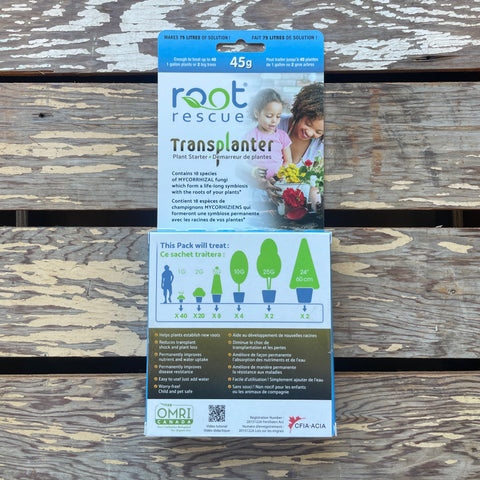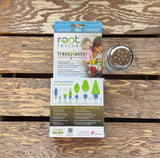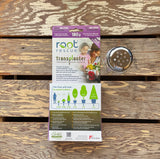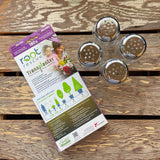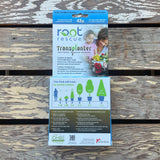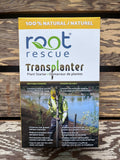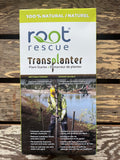AVAILABLE FOR PICK-UP IN OUR VICTORIA SHOWROOM
In my gardening business, I have both seen huge benefits from using mycorrhizal fungi when planting. We have significantly reduced plant losses when planting in less than ideal conditions.
These fungi are essential to optimum plant health and should be used whenever planting, seeding, propagating, or transplanting. The fungi will stay with the plant for life, so you only need to do this once!
In soil that has recently been compacted, waterlogged, tilled/worked, drought-stressed, or treated with chemicals, mycorrhizae will be lacking. They are typically not present in imported topsoil or most potting soil mixes either. They cannot be multiplied in compost as they need a living plant host to survive. In any of these scenarios, they need to be added back to the soil. This product is also helpful in improving the quality and health of a newly-seeded lawn.
How to Apply It
I've been using mycorrhizal fungi for many years and the best, most controlled and efficient way my crew and I have found to apply it is with a parmesan cheese shaker! Which, for convenience, you will find for sale here.
How it Works
Mycorrhizal fungi form mutually beneficial relationships with over 95% of common plant species.
They surround and even enter the roots of these plants, and provide nutrients such as phosphorus (and to a lesser degree, nitrogen), trace elements, and water to plants in exchange for carbohydrates.
In fact, some plants trade more than 50% of their carbohydrates with these fungi and other microbes. Fungal mycelium represents carbon drawn from the atmosphere and stored in solid form underground.
The fungi also greatly improve soil characteristics by improving soil structure and porosity. And, amazingly, they act as a line of defense, protecting the roots in the soil environment.
Check out our entire collection of Organic fertilisers and soils
Need this item shipped? Check out the Organic Gardener's Pantry site here for more details and shipping options across Canada.

